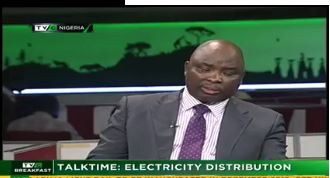TVC E. Barrister Sunday Oduntan Executive director, research and advocate AEDC a guest on TVC Breakfast Show today 28th of July 2016 disclosed that, the Nigerian financial institution has refused to support the sector and he feels it is because there is corruption in the country. and he also opined that there should be a special court for electricity crime, which will in turn reduce corruption.
Privatisation of Discos and Issues Arising
There are eleven successor Discos in Nigeria, arising from the unbundling of the Power Holding Company of Nigeria (PHCN). The Discos and their coverage states are listed below.
| Successor Disco | States Covered / Franchise Areas |
| Abuja Disco | FCT, Niger, Nassarawa, Kogi |
| Benin Disco | Edo, Delta, Ekiti, Ondo |
| Enugu Disco | Imo, Anambra, Ebonyi, Abia, Enugu |
| Eko Diso | Lagos State (Victoria Island, Lekki, Lagos Island, Apapa, Epe, Ikoyi, etc) |
| Port Harcourt Disco | Rivers, Bayelsa, Cross Rivers, Akwa Ibom |
| Ibadan Disco | Oyo, Ogun, Osun, Kwara |
| Ikeja Disco | Lagos State (Ikeja, Surulere, Ikorodu, etc) |
| Jos Disco | Plateau, Bauchi, Benue, Gombe |
| Kano Disco | Kano, Jigawa and Katsina |
| Kaduna Disco | Kaduna, Sokoto, Kebbi and Zamfara |
| Yola Disco | Adamawa, Borno, Taraba and Yobe |
The eleven Discos have been fully privatised and are private sector operated and managed, with the exception of Yola Disco, where the core investor declared force majeure arising from the continued insurgency in North-Eastern Nigeria. The Bureau of Public Enterprises (BPE), on behalf of the Federal Government and Labour, own 40 percent of the shares of all the eleven Discos, while various Core Investors have a 60 percent shareholding in the respective Discos.
ATC & C Loss Reduction
The privatisation of Successor Discos was done using the concept of Aggregate Technical, Commercial and Collection (ATC&C) loss reduction. Under this methodology, the investor that proposed the highest ATC&C loss reduction (in absolute percentage terms) over a five-year period was deemed to have won the bid for the shares of the Disco. The ATC&C loss reduction concept was preferred over other sale evaluation methodologies to ensure that core investors addressed the fundamental issues of high losses in the operations of Successor PHCN Discos. Before going on, it is important to explain these losses, as it is fundamental to understanding the issues faced by Discos.
Technical (distribution) losses are electrical losses arising from the transformation of electrical energy into heat energy as it flows through conductors. As electricity flows through wires and transformers, some electricity is lost as it changes into heat and sometimes, light energy (electrical sparks) and is dissipated. All electrical systems and conductors have technical losses. Commercial losses are revenue losses arising from electricity theft, poor billing practices, cash theft or diversion, inaccurate customer database, wrong tariff classification of customers, unmetered customers and unaccounted energy. Collection losses are simply revenue losses arising from discos’ inability to collect revenues for energy billed to known customers. Discos’ inability to collect billed energy could be as a result of poor billing data, revenue collection inefficiencies, customer default or recalcitrance in paying their bills. Commercial and collection losses are usually collectively referred to as non-technical losses. The importance and impact of ATC&C losses in determining electricity tariffs under the current MYTO tariff methodology will be discussed in a future paper.














